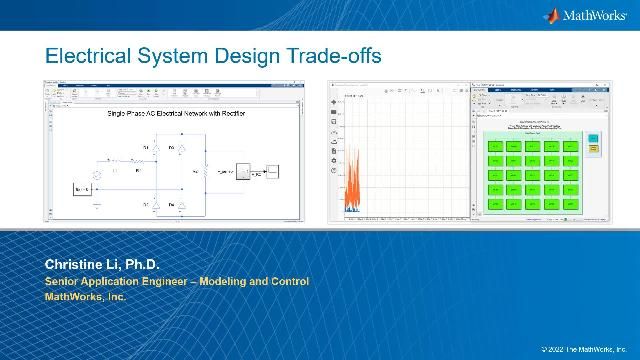Simulating a Microgrid with Energy Storage | Developing Electrical Systems with Simscape Electrical
From the series: Developing Electrical Systems with Simscape Electrical
In this example, learn how to create a mixed AC to DC microgrid containing traditional rotating machinery, a battery, two fuel cells, and a PV array. First, develop and test each of these components independently. Then, connect model components to construct and test the full microgrid system to see how the power management unit operates.
Published: 24 May 2022





